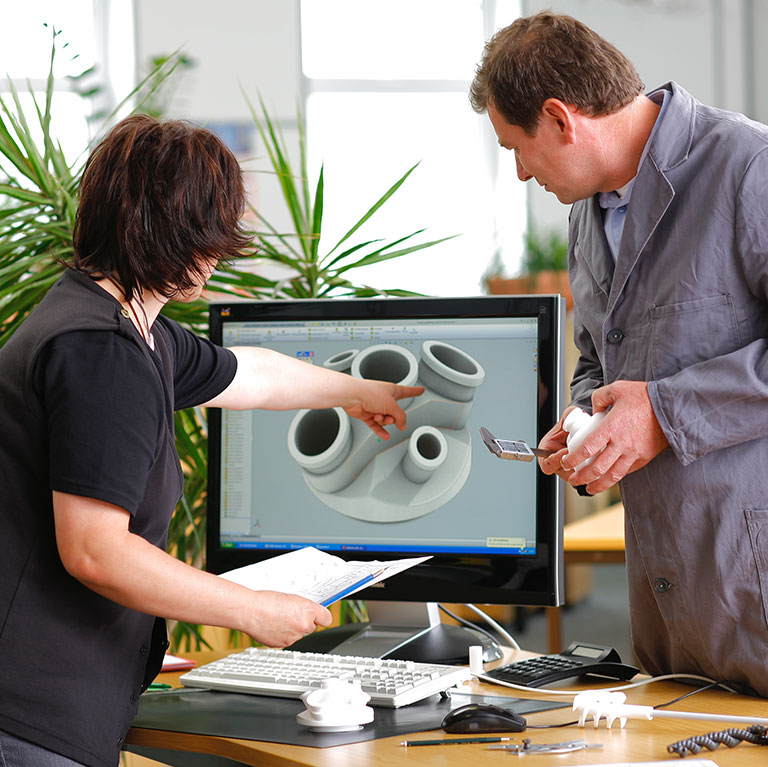Stirrer - Magnetic Stirring
Magnetic stirring is a widely used method of stirring and mixing in liquid media. This process can be used over a broad temperature range and with virtually any chemical agent, as well as in open and closed systems, under pressure or vacuum.
The basic system consists of two components:
a stirrer magnet placed in the liquid and a magnetic drive located outside the vessel. Both, stirrer magnet and magnetic drive form a magnetic circuit. For trouble-free stirring in liquids with different viscosities the magnetic drive shall have a wide range of different speeds. That is why the strength and form of the magnetic circuit between stirrer magnet and drive magnet is so important.

The stirrer magnet is a bar magnet encapsulated in a material which protects the magnet and prevents contamination of the liquid medium.
The core of the stirrer magnet is usually Alnico V, a less used alternative is Samarium-Cobalt. Due to its exceptional chemical and thermal (-200 °C to +260 °C) properties, Polytetraflouroethylene is the most preferred encapsulant. It can easily be processed, is readily sterilised and satisfies FDA and USP Class IV requirements.
In principle, it is difficult to find the most effective magnetic stirring bar for a particular application, but important factors are the vessel shape and the viscosity of the stirring medium. In a petri dish, a long stirring bar at low speed will be effective, in a round bottom vessel egg-shaped (oval) magnetic stirrers will be a suitable choice. The ideal configuration is where the magnet of the stirring bar and the magnet of the drive are of equal length and with a minimum distance between them.
A Cylindrical magnetic stirring bar » B Oval or Egg-shaped magnetic stirring bar » C Magnetic stirring bar with bearing neck » D Magnetic stirring bar for cuvettes » E Magnetic stirring bar for culture bottles » F Custom manufacture for flanged reactors

The increase of the magnetic strength by using a SmCo magnet may be advantageous for many applications. However, this can have also negative consequences:
Migration:
Where the stirrer magnet and drive magnet have very different lengths, the stirrer magnet can migrate to a pole of the drive magnet.

Braking:
A very powerful force between drive and stirrer magnet can result in a braking effect. Due to the pressure of the stirrer magnet on the bottom of the vessel, the speed of rotation is reduced and rotation can even be prevented.
In general, no advice for or against a certain stirring bar form can be given. In case of doubt, a test of different stirring bars under your own conditions may be helpful.
The second part of this stirring system is the magnetic drive that consists in its simplest form of a simple, speed controlled induction motor or a stepper motor. In some cases the motor incorporates automatic reversing to improve mixing. Normally, the drive magnet is a simple square bar magnet, a U-magnet or a composite SSMCmagnet. Its rotation induces rotation of the stirrer magnet in the liquid. The designated speed can be adjusted by an incorporated speed control.



















































